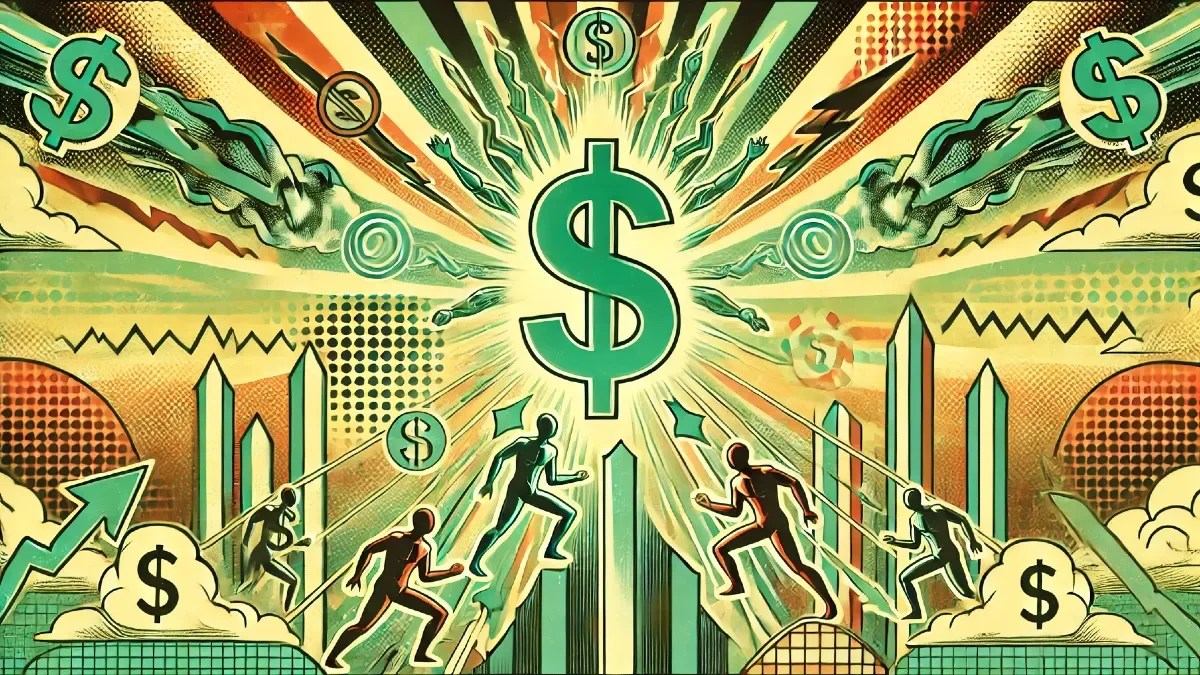BRICS vs. the Dollar: Who’s winning the fight?
As we start to emerge from our holiday festivities, many of us are reviewing the New Year's resolutions we made just a few days ago. “Did we really tell everyone we were going to do all those things?” 2025 felt so far away back on December 31st. It might surprise you to learn that countries go through something similar with the promises they made, the changes they said they’d implement, and the futures they were supposed to usher in—well, right about now.
It’s normal that things sometimes take longer than expected; it’s just part of the process. Which brings us to the topic we’re going to semi-analyze today: the de-dollarization of the Global South through a BRICS alternative currency. Yep, we’re going there today. Vacation’s over.
The dollar’s reign and the rise of sanctions
Since the Bretton Woods Agreement in the 1940s, the US dollar has been the big bad wolf hovering over global markets. After the Second World War, the global economy needed a new reserve currency, investment, and the reconstruction of many parts of the world. For a while, the dollar’s reign was broadly accepted; it encouraged international trade by allowing most transactions to settle in dollars, avoiding the need for dozens of small, illiquid currency exchanges. So, what changed? Why do some countries (and people) want to move away from the dollar? In one word: sanctions.
Sure, there are many other reasons countries might want an alternative to the dollar. But for the sake of brevity—and under the watchful eye of my editor, who once sent me a photo of scissors when my column was too long—let’s focus on sanctions, something most readers are familiar with. And really, it’s easy to understand why sanctioned countries aren’t fans of the idea.
BRICS and their alternative currency
Enter the BRICS countries—Brazil, Russia, India, China, and South Africa—joined recently by Iran, Egypt, Ethiopia, and the United Arab Emirates. One of the group’s main goals, focused on the developing countries of the Global South, is to reduce their dependency on the US dollar—not just for trade settlement, but to make themselves less vulnerable to US sanctions. Sounds like a reasonable plan, right? Think of it as their collective New Year’s resolution… made over 15 years ago.
And if you’re wondering whether sanctions are really that common, yes, they are. The US and other Western countries serve sanctions like an all-you-can-eat buffet and invite every nation on their list to come grab a plate. What do sanctions taste like? You guessed it—chicken.
So, as many BRICS nations chew through their chicken-flavored sanctions, the big question is: how likely is the current BRICS proposal for an alternative currency to succeed? The answer: not very.
The challenge of building a common currency
One of the main challenges to building a true alternative to the US dollar is the sheer heterogeneity of the countries involved. Yes, they all agree on wanting to reduce dollar dependence—or at least have a solid alternative that gives them more room to maneuver from a trade and economic security perspective. But beyond that, their goals start to diverge. Take just three of the original BRICS countries: China, Russia, and India. Each has a very different view on how the world should be shaped—economically, culturally, and militarily. And the more members the group adds, the harder it becomes to define a shared monetary policy that serves everyone equally. The euro still struggles with that today.
That diversity—of cultures, languages, interests, and priorities—is exactly what makes a long-term common currency unlikely to replace the dollar in a meaningful way. Could it be used in specific cases or markets? Sure. But as things stand, there’s still a long way to go. The US dollar, on the other hand, is backed by a single country, a single population, a single language, and a very large military.
Why talk about BRICS in a column about tech?
Fair question. The reason is simple: money is technology. It’s what holds societies together, what gives us confidence when we check our bank accounts, and what lets us measure the value of a day—or a year—of work. You didn’t pay for the device you’re reading this on with a smile or a wink. You paid for it with money.
In the end, if Western countries—led by the US—keep expanding their sanctions buffets, the day may come when an alternative currency has a real shot at replacing the dollar or the euro. But for now, and for the foreseeable future, the dollar and its best friend the euro appear here to stay.
Originally published in Spanish for Fast Company Mexico:
https://fastcompany.mx/2025/01/09/brics-dolar-batalla/

